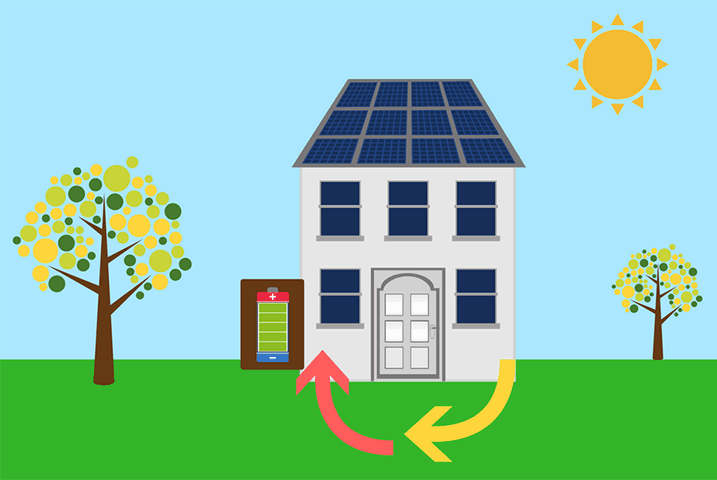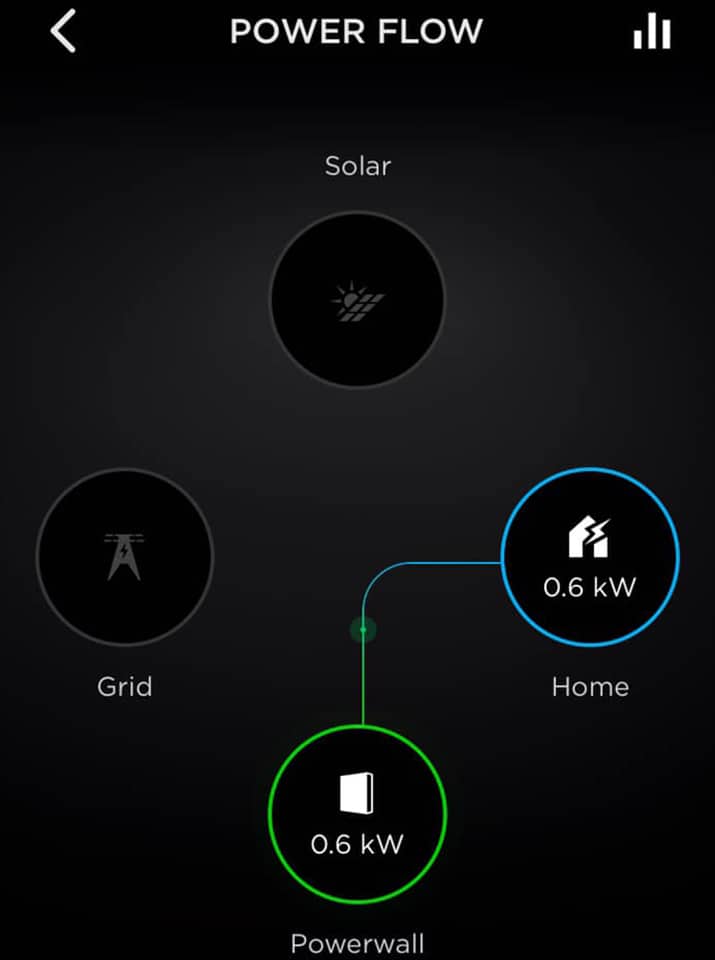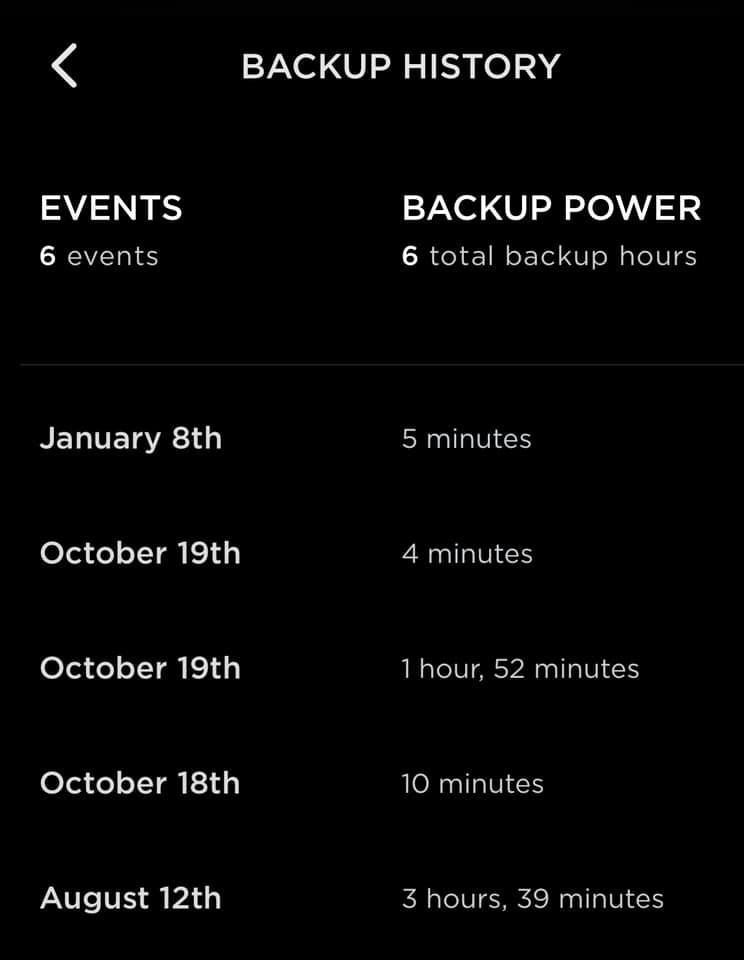There’s no doubt that “energy storage” is now a common buzzword associated with solar and renewables. Just from our customers alone, storage seems top of mind. This growing curiosity has inspired us to recently explore the future of the storage industry in Massachusetts.

Energy storage, often referred to as a battery system, is essential in making your home a powerhouse. Storage systems like Tesla Powerwall protect your home from power outages, allows you to store your solar energy and/or take energy from the grid when rates are the lowest, and helps create a reliable grid system. Storage protects both you and your community. As a Certified Tesla Powerwall Installer, we’ve deployed several Powerwalls to Hawaii, Massachusetts, and Idaho.
Powerwall is a rechargeable battery that stores electricity during the day when solar is plentiful or when grid electricity is inexpensive and delivers clean, reliable electricity when the sun isn’t shining or during a grid outage.
Because the U.S. storage market is expected to grow 12 times the size of the 2016 market, the topic has also been of high interest to other industry experts. Kelly Pickerel, Editor in Chief of Solar Power World, asked Solaris Renewables for our take on how solar installers are embracing storage and its market potential. Pickerel interviewed Brian Sadler, Solaris Renewables’s Vice President of Business & Project Development. Afterward, we were able to reflect on our gleaned impressions of the emerging storage market and its quick evolution. Our impressions include changes to how storage is perceived, its market demand, and increased curiosity about going off the grid.
4 Impressions of the Solar + Storage Market
1. Storage is now seen as practical rather than just a luxury

Sadler explained that Solaris Renewables started receiving inquiries about Tesla Powerwall because it was seen as the newest toy for early adopters. Because energy storage has several practical applications, its market demographic has evolved quickly. Beyond the early adopters, most of our storage customers are drawn to both adding resiliency to their homes and engaging in a “power switch” between themselves and their utility companies.
Storage is also becoming attractive to consumers in less solar-savvy states without strong net metering policies. Net metering occurs when a solar system produces excess energy not used in the home. The excess energy is automatically sent to the grid to be used by other grid-tied homes.
Happy Solaris Renewables Idaho customers, Jean and Sheldon B., added storage to their home to avoid changes in Idaho solar policy. “We wanted to get through any power outages and make sure we are prepared for any changes to the Net Metering laws in Idaho. With our Tesla batteries, we can use our solar on-site and won’t be affected by future regulations. We felt it was important to be in the vanguard in solar power. This is really the future.”

2. Local power outages spur battery demand

In the article, Sadler estimated that close to 50% of Solaris Renewables’s solar installations this year will include storage. More people are adding energy storage to their homes now than ever before. This will continue to rise due to intense weather-related incidents propelled by climate change, increased demand for solar, and the appeal of decreasing their dependence on their utility company or even going off the grid.
Hundreds of thousands of Massachusetts residents who depend on an outdated grid lose power every year. Energy storage enables homeowners to control their energy supply sustainably when their utility grid is down.
3. “Energy independence” is appealing to homeowners
Solar and storage allow you to be energy independent from your utility. This means that, when you pair your solar system with storage, you will not have to rely on the grid for power when solar energy is less available. Also, in times when the utility’s grid is down, your home will still have a source of power.
The term “off the grid” refers to living and powering your home without reliance on your utility for power. Off-grid homes require alternative power options like solar energy and energy storage like Powerwall.

I want solar and storage. Should I go off the grid?
The economics of solar make much more sense when a solar customer is still connected to their utility company. This means that you should not go off the grid if your main motivations for going solar are the financial benefits.
Technically, during a power outage, solar and non-solar customers are off the grid simply because the grid is down. However, in all other cases, the connection to a utility company enables communication between your home’s meter and the grid. In order to receive financial compensation for your energy, you must be connected to the grid. This allows your home to be a “distributed generation site,” according to Sadler. Plus, you can always use the grid as your backup, especially if you do not have energy storage.
4. Some states now incentivize energy storage

In June 2017, the Massachusetts Department of Energy Resources (DOER) announced a statewide goal of 200 megawatt-hours worth of storage by 2020. The plan, called The Energy Storage Initiative, aims to make the state a national leader in the storage market with a $10 million commitment to support Massachusetts energy storage companies and create policy to foster storage deployment.
Massachusetts is just the third state to incentivize storage. Other states with energy storage initiatives include, but are not limited to, Nevada, Maryland, California, and Oregon.
If you purchased a solar system and/or battery and you are connected to a utility company in most areas of Massachusetts, you are eligible for federal, state, and local financial incentives. These incentives include:
Federal incentive: Federal Income Tax Credit (ITC)
The Federal Income Tax Credit (ITC), also referred to as the solar investment tax credit, is one of the most important initiatives involved in the expansion of solar nationwide. The ITC is a 26% tax credit on the full cost of installing a solar and/or battery system on a residential or commercial property.
In order for your battery to be eligible for the tax credit, your storage system needs to be charged by clean energy. If you purchased solar in the past and wanted to add storage now, you would be eligible for the tax credit. Storage without a renewable energy source is not currently incentivized.
However, 2020 is the last year that homeowners can take advantage of the 26% tax credit. To be guaranteed full tax credit, it is imperative for customers to take advantage of the current federal incentive program.
State incentives: The SMART Program and tax credit
The Solar Massachusetts Renewable Target (SMART) Program is an incentive program that offers a fixed compensation rate for the energy your solar system produces so that the lifetime revenue for your solar energy will be known from the start. Additionally, SMART offers incentives for battery storage. Combined with the 30% tax credit, the incentive for solar plus storage helps pay a significant portion of the cost.
The program has a declining block structure so that as each block fills up, the incentives and capacity of each block decrease. For example, Block 1 under SMART allows solar customers to take advantage of 100-percent of the SMART incentive available and is capped at 200 megawatts worth of solar installations. However, after that block fills up, incentives and capacity of the following blocks decline. he longer you wait to go solar or add storage, the less money you save and earn.
Additionally, the state provides a personal tax credit of 15% of your total system cost, up to $1,000, when a Massachusetts resident purchases a solar system.
Local incentive: Net Metering
When a solar system overproduces energy, it sends the excess energy back to the grid through a process called net metering. Net metering allows you to generate savings on your electric bill for every excess kilowatt-hour you produce each month.
Your solar system is expected to overproduce during the summer months and underproduce during the winter months. However, this doesn’t mean that your electric bill in the winter will be high. Net metering credits roll over each month, allowing your solar energy produced in June to be used in November. Net metering works like rollover minutes on your phone bill. If you have 100 minutes each month and only use 60 minutes in March, then those unused 40 minutes will roll over in April, giving you 140 minutes to use. This enables you to pay a reduced electric bill (or none at all) even during the times when your system produces less energy.
Hear From Our Powerwall Customer

Tom, one of our Powerwall customers, is delighted about the functionality of his new energy storage system. Powerwall stores excess solar energy produced during the day to use at night when his system isn’t producing energy. Powerwall also automatically guards Tom’s energy supply when a storm is coming. Whether the grid goes down for hours or just a few minutes, Powerwall maintains power in Tom’s home. No matter the weather or event, Powerwall will protect his home for years to come.
Get Energy Storage from Solaris Renewables
Powerwall is the top energy storage system on the market due to its smart features and safe design. If you are considering going solar or if you already have solar, adding energy storage is a good next step. By acting soon, you can still claim the generous state and federal incentives for installing a solar and a battery. Let us help you achieve your home energy goals by filling out this form.

